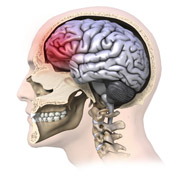Research and Innovation, UNL Office of

Center for Brain, Biology, and Behavior: Faculty Publications
ORCID IDs
D’Alonzo 0000-0002-3760-2158
Schneider 0000-0003-0026-5052
Barnett 0000-0003-3256-5703
Master 0000-0002-6717-4270
Bretzin 0000-0003-3730-2849
Wiebe 0000-0002-6434-8693
Document Type
Article
Date of this Version
2024
Citation
Sports Medicine - Open (2024) 10: 86
doi: 10.1186/s40798-024-00742-4
Ivy League-Big Ten Epidemiology of Concussion Study Investigators inlcude Cary R. Savage and Kate Higgins, University of Nebraska-Lincoln
Abstract
Background
Growing interest has motivated recent studies to examine differences in recovery after sportrelated concussion (SRC) by sex. However, heterogeneity in study design, participants, and recovery outcomes has led to mixed findings. Further work is needed to evaluate potential differences by sex and to investigate the role of related characteristics, such as sport contact-level, in recovery timelines. This study aimed to investigate whether concussion recovery trajectories differ by sex, considering a priori clinical and demographic covariates, and accounting for the sequence of recovery outcomes. Our secondary question was whether sport contact-level modifies the relationship between sex and time to outcomes. Using data from the Ivy League–Big Ten Epidemiology of Concussion Study, we included SRCs reported across five academic years; 2015–2020 (February 2020). We used Cox proportional hazards regressions to estimate associations between sex and time from injury to three outcomes: (1) symptom resolution, (2) return to academics, (3) return to full play, accounting for measured confounders.
Results
Among 1160 SRCs (male, n = 667; female, n = 493) with complete data, median age overall was 20 years (25th-75th percentiles:19–21), and most occurred among athletes playing high-contact sports (78.0%). Males were slightly more likely to complete symptom resolution over time compared to females (HR = 1.18, 95%CI = 1.05–1.33), but results were attenuated in fully adjusted models (HR 1.13, 95%CI = 0.99–1.29). Similarly, the HR of full academic return for males compared to females was 1.22 (95%CI = 1.07–1.38), but was attenuated in fully adjusted models (HR = 1.11, 95%CI = 0.97–1.28). The HR of full return to play for males compared to females was 1.14 (95%CI = 1.02– 1.28), and was attenuated after adjustment (HR = 1.06, 95%CI = 0.93–1.20) as well. The interaction between sex and playing a high/low-contact sport was not statistically significant across models, though differences were apparent.
Conclusions
Among a cohort of collegiate athletes with SRC, recovery timelines appeared similar between male and female athletes, adjusting for measured confounders. Differences by sex, considering sport contact-level, were evident and may be important clinically and in future studies. This study used robust methods, accounting for nesting in the sequence of RTP outcomes. Results inform concussion management protocols and planned qualitative work to further elucidate how collegiate athletes experience concussion recovery.
Key Points
• Heterogeneity in study design, participants, and recovery outcomes has led to mixed findings in determining differences in recovery trajectories after concussion by sex.
• We found that having longer time to symptom resolution, and also the sequence of having academic return before symptoms resolve and longer time to academic return were confounders in the relationship between sex and RTP timelines. Time to sequential recovery outcomes appeared similar between male and female athletes, adjusting for observable confounders. Further differences by sex were evident when considering contact-level, and may be important to consider clinically and in future research.
• Results indicate that differences in concussion recovery trajectories by sex may be largely attributed to and driven by differences in sports with a men’s or women’s team only, such as football, and this should be explored further.
Included in
Behavior and Behavior Mechanisms Commons, Nervous System Commons, Other Analytical, Diagnostic and Therapeutic Techniques and Equipment Commons, Other Neuroscience and Neurobiology Commons, Other Psychiatry and Psychology Commons, Rehabilitation and Therapy Commons, Sports Sciences Commons


Comments
Copyright 2024, the authors. Open access article
License: CC BY 4.0 International